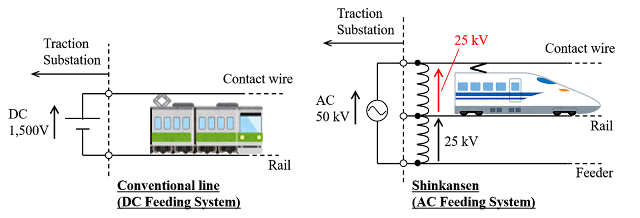Frequencies

Electric power network in Japan are 50Hz in Eastern Jap an from Kanto to the North and 60Hz in Western Japan from Chubu to the West, and are divided in the vicinity of Tokaido, with the Fuji river serving as the boundary. To provide a through operation by means of AC electric cars between the two regions with different frequencies, frequencies must be standardized by ground equipment or dual-purpose 50/60 Hz rolling stock must be used . For the Tokaido Shinkansen , power has been supplied at a uniform frequency of 60Hz by means of ground facilities because of reliability improvements through simplification of the electrical equipment of rolling stock and to achieve lighter rolling stock . However, for the Hokuriku Shinkansen which has started commercial operation in 1997, a 50/60 Hz dual-purpose rolling stock system was adopted . Reasons are as follows: (1) technological advancements enabled to produce lighter 50/60 Hz dual-purpose rolling stock . (2) a freque
